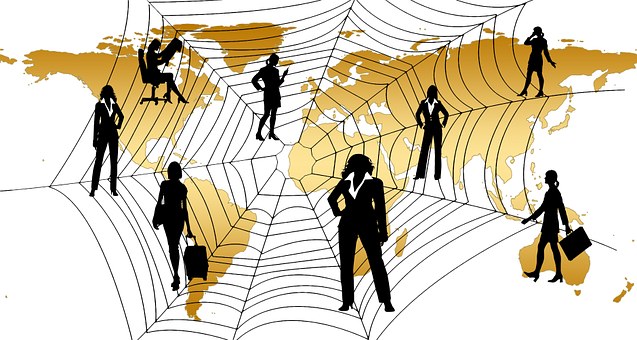Top tips from Mesmo Consultancy (and Associates) on how to save time and improve business and personal performance by ‘Taking Control of your Inbox’ and using proper business email etiquette.
Fed up with endless rounds of email ping-pong going no where? Watch video number four of Mesmo Consultancy’s new series on Business Email Management and Etiquette: top tips to stop playing email ping-pong.
First, these top tips will help you improve business and personal performance and productivity. Second, stopping playing email ping-pong will enable you to reduce email overload and improve well-being.
Tags: business email etiquette, Business email management, email overload, Email ping-pong, Mesmo Consultancy, Save time dealing with email
This month is like a box of licorice allsorts with articles a range or articles on business email management and business email etiquette. They including, the business email etiquette of using the Out of Office Message, best business email etiquette for opening and closing emails, social media gives us more networking but are we any happier and a new report on mobile/flexible working. Read on.

Did you spot an article on business email management and etiquette which you can share to help us all reduce email overload?
Tags: anywhere, business email etiquette, Business email management, ilO, out of office message, Quora, Sherry Turkle, Work anytime
On International Women’s Day, it is timely to look at back at some research carried out by Mesmo Consultancy several years ago.
Not surprisingly, it showed that the differences between how men and women operate in business (and socially) carries over into how they communicate. For an in-depth review see Gender and Communication at Work edited by Mary Barrett and Marilyn Davidson and Managing in the Email Office by Monica Seeley and Gerard Hargreaves.
Meanwhile, here is a brief summary of the main difference.
| Criterion | Men and email | Women and email |
| Deleting | Often | Hoarders keeping too much just in case |
| Subject line | Limited | More accurate |
| Salutation | Often none | Nearly always included |
| Tone | Terse | Flowery |
| Content | Shorter, crisper and to the point | Rambling and often flowery |
| Gossip | Often – the main culprits email media disasters | Rarely |
| Imagery | Rarely included, but occasional includes text-speak emoticons | Often use stationary and ‘smiley’s’ |
| Sign-off | Professional, bland but can be terse | Flowery, often uses colour and fancy fonts |
What as changed. Judging by the many emails I see, very little.
For more information and especially how to bridge the gap see first published in Brilliant Email.
Tags: Brilliant Email, business email etiquette, Gerard Hargreaves, International Women's Day, Men's email etiquette, Women's email etiquette
How can you entice people to respond properly and in full to your emails? Try the 5S Formula for writing business emails which are polite, professional and compelling without being either arrogant nor pushy.
Still having trouble getting people to respond to your emails? Click here to benchmark the rest of your email etiquette.
For more tips like these either buy on of my books such as ‘Brilliant Email’ or ‘Taking Control of Your Inbox’ or come on one of Mesmo Consultancy’s email management workshops.
Tags: Answer my email, Brilliant Email, Business email, business email etiquette, Get emails answered, Mesmo Consultancy, Politley ask people to respond to emails, Taking Control of Your Inbox
Email addiction and mental health go hand in hand. Email addiction is a major cause of stress and hence poor mental health. There are plenty of organisations to help you cope with well documented sources of addiction such as alcohol and substance. But what of chronic email addiction and mental health? Compulsive checking of emails is often hidden behind phrases like ‘my clients/colleagues expect me to be on-line’, ‘it’s part of my job’, ‘what if I miss an email from a key contact’. Are these reasons justified or just a cover up for deeper problems such as email addiction?
 We all have extraordinarily busy periods when it can be prudent to check your email frequently and outside normal office hours (eg year end, major project closing, takeover bid etc). For more normal days, what does checking your email every few minutes really tell us?
We all have extraordinarily busy periods when it can be prudent to check your email frequently and outside normal office hours (eg year end, major project closing, takeover bid etc). For more normal days, what does checking your email every few minutes really tell us?
Maybe you work in an email dependent culture where people rarely walk and talk. Maybe you feel insecure, anxious or lonely. In that case it is symptomatic of a mental health problem. Tackling email addiction should be a key priority for every organisation and not just during mental health week.
At a personal level click here to check your level of email-addiction. Then use the top tips below to start breaking the cycle.
Still addicted, then seek more help. We can help with email addiction. For the mental health aspects talk to a specialist.
If you work in an email dependent culture then perhaps it is time to make colleagues aware and especially the potential cost to their well-being and mental health.
Tags: Compulsive checking email, Email Addicton, email culture, Email dependant culture, Mental Health, Mental Health Awareness Week